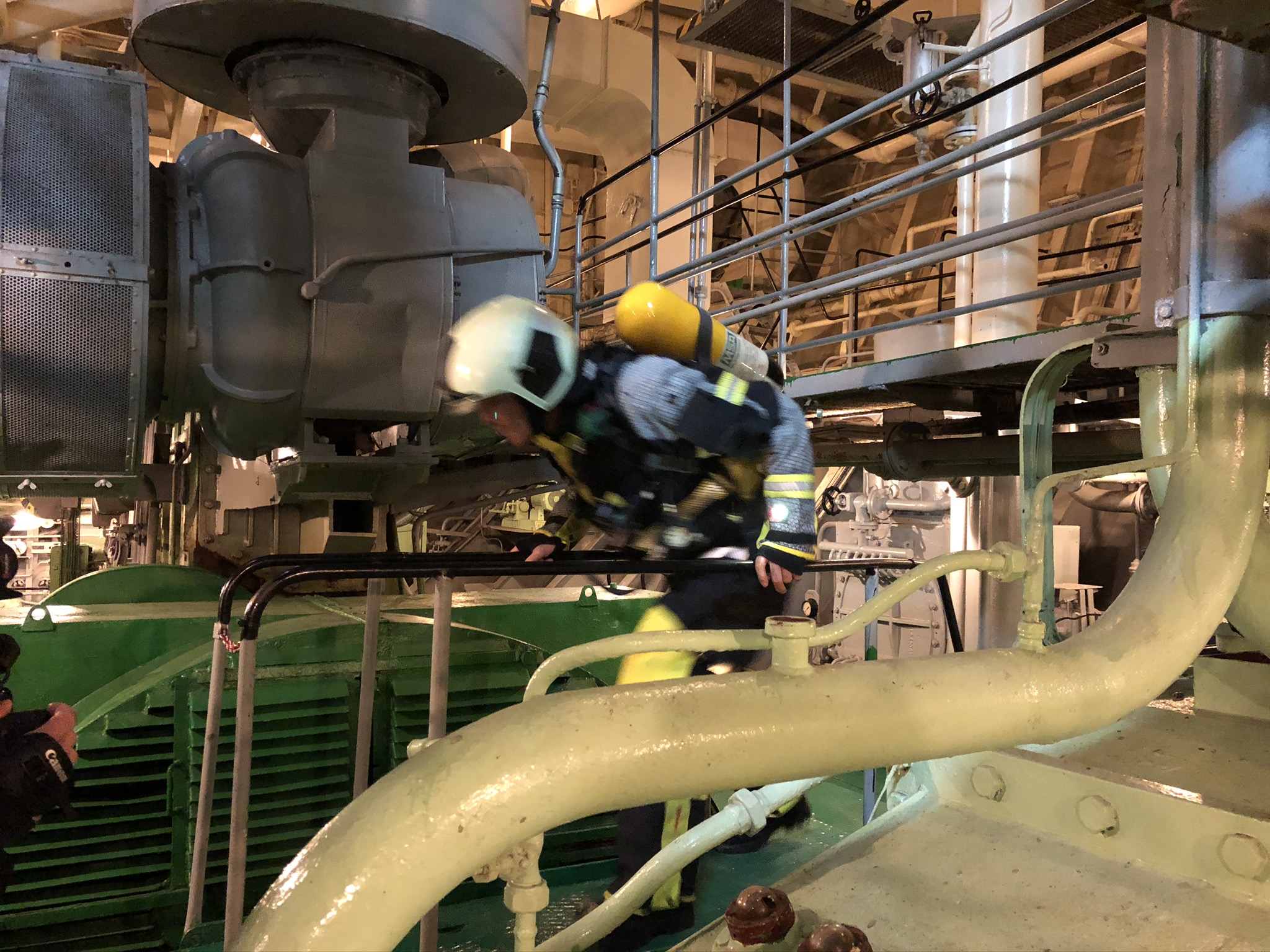Narrow corridors, tight hatches, rapidly heating steel walls - a fire on board a ship is a special challenge for firefighters involving many risks. In the event of a fire in the engine room, for instance, the responders have to fight their way with equipment and heavy hose in hand, through several decks, smoke and heat straight into the bowels of the ship. This also poses a difficult situation for those charged with directing the effort: once their teams disappear into the belly of the ship, radio contact can also be lost.
Live information from burning ships
Mission Support System for Fire Brigades to Combat Hazards on Board Seagoing Vessels (EFAS)
Task
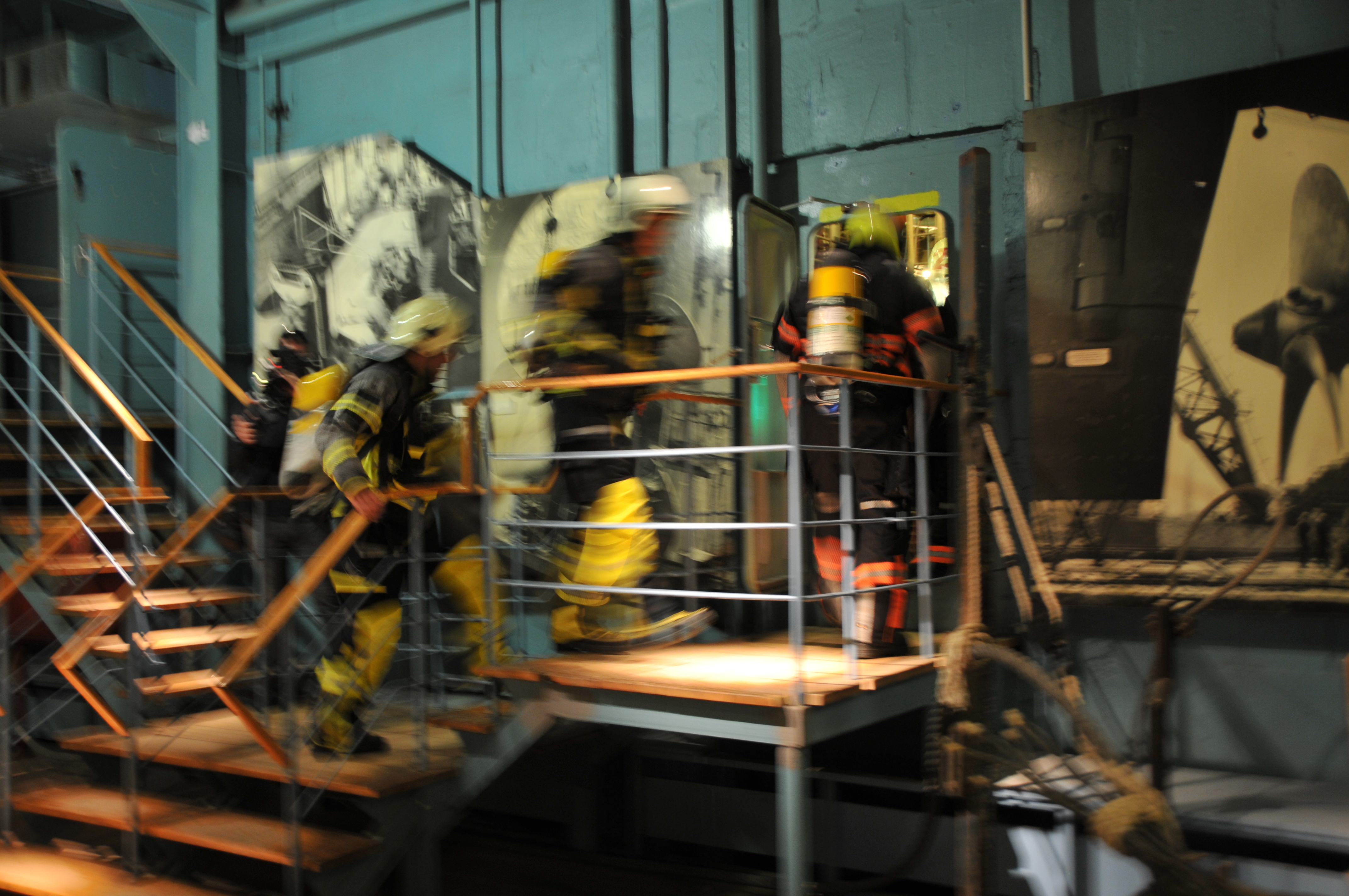
When a ship burns in port, it is a very special case, as the responsibility lies with the onshore fire brigade. But the emergency services are not ship crew members and have only limited training for such operations. For these firefighters, the countless types of ships and their different structures as well as the unique nature of waterborne operations represent rare and difficult operating conditions.
Against this backdrop, the aim of the EFAS project, which was funded by the Federal Ministry of Education and Research (BMBF) with a budget of €2.3 million, was to develop a concept that ensures communication and transmission of critical situational data during ship-based operations. After all, the better the information and data situation, the greater the safety of the emergency services.
Methodology / Approach
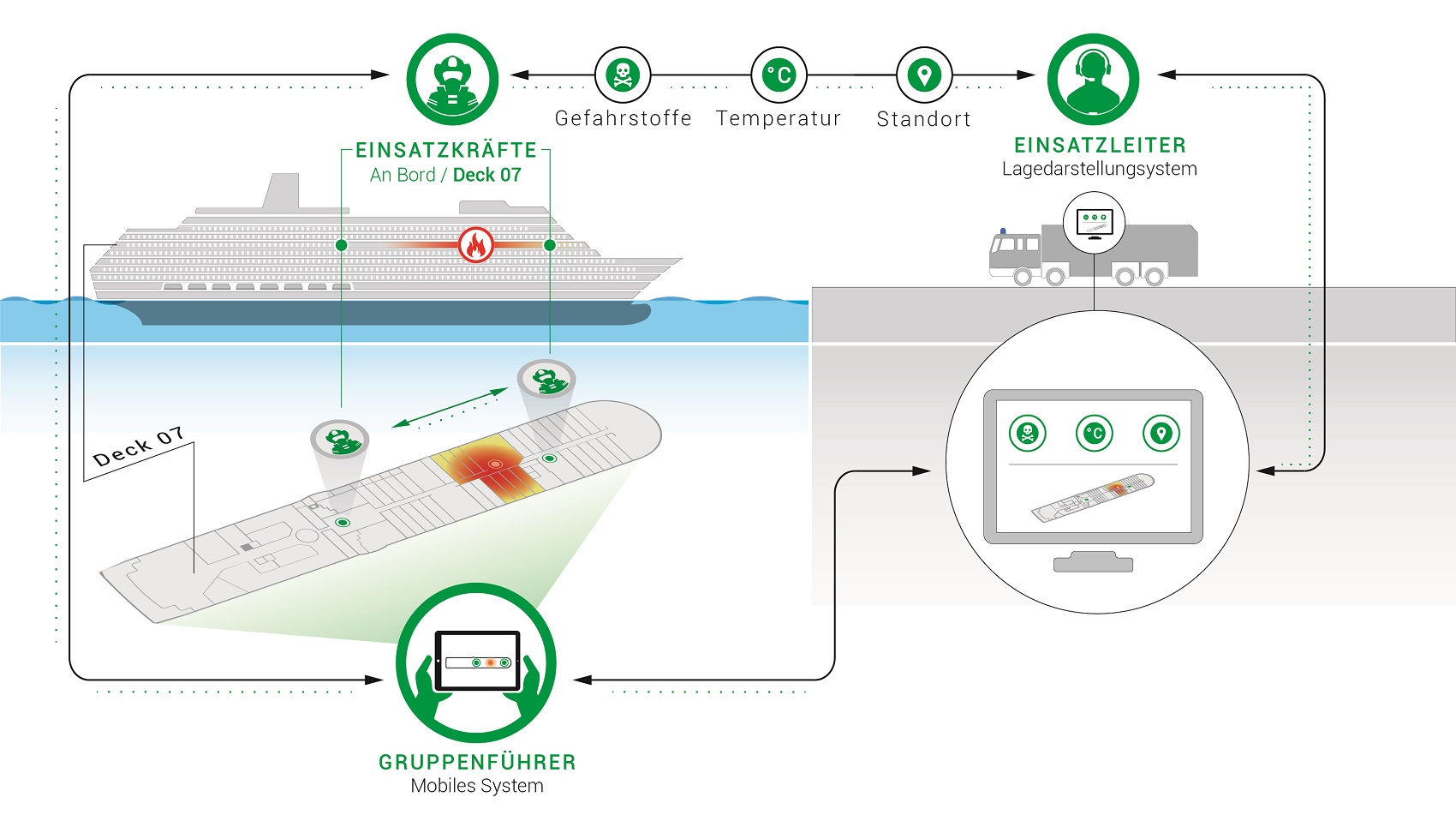
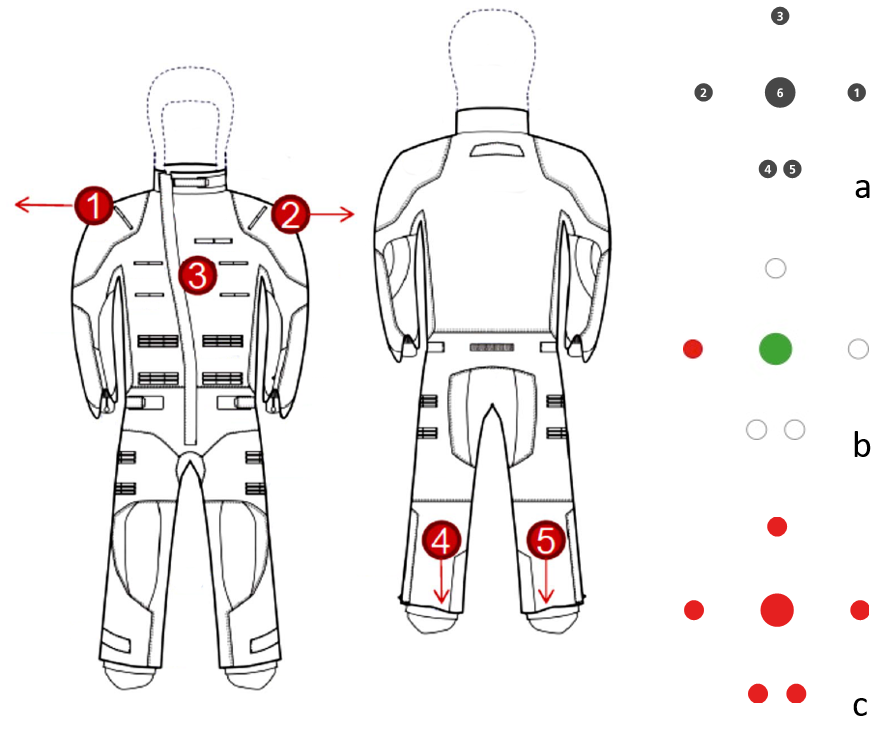
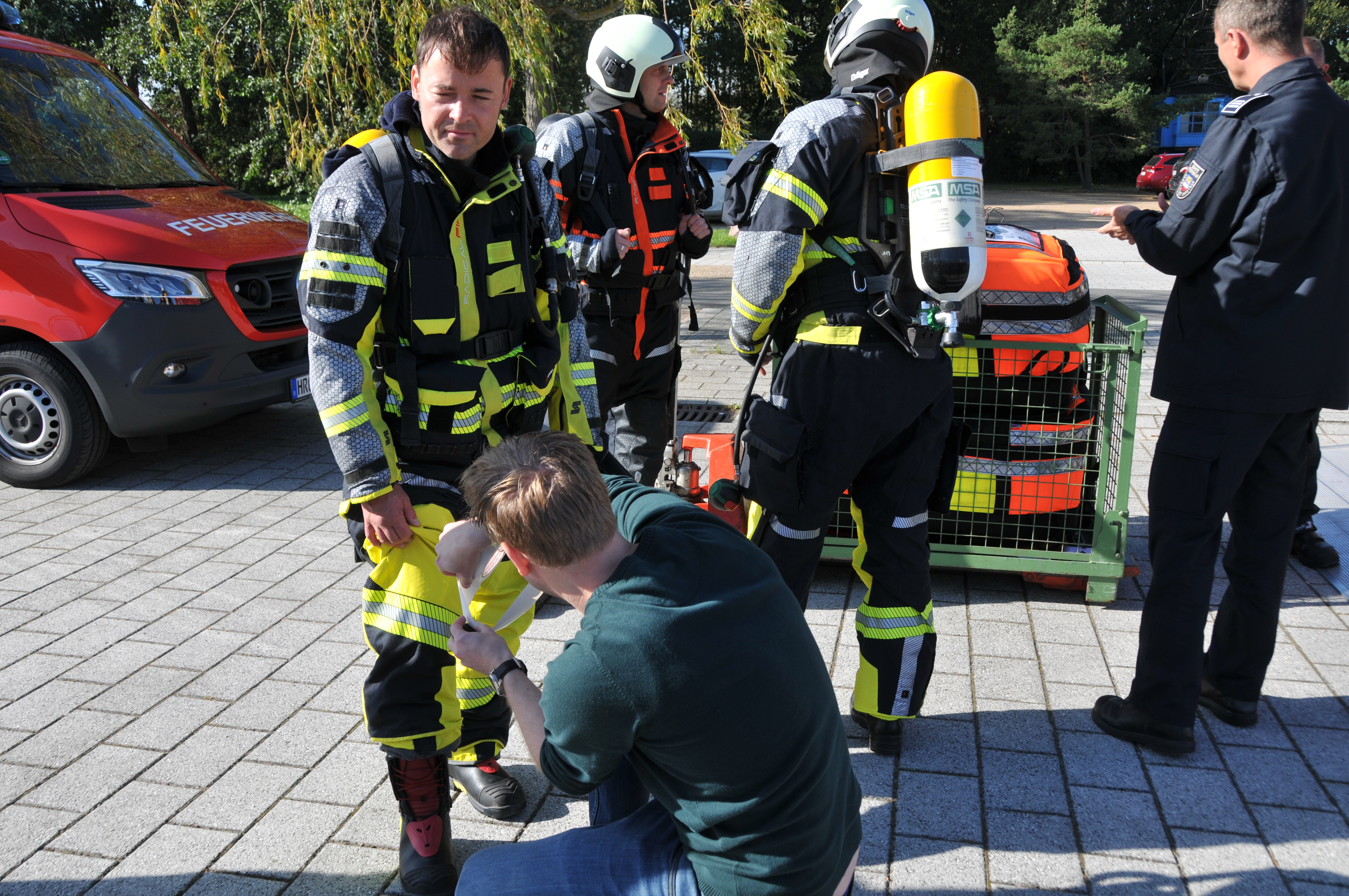
In EFAS, sensors were integrated into the protective suits of the emergency services to measure body surface temperature, ambient temperature and the temperature of nearby objects. Data transmission was carried out via a mobile phone with heat shielding, which personnel carried with them in their protective suits. At the request of the Wilhelmshaven fire brigade, the protective clothing was designed as a coverall, rather than the conventional jacket/trousers combination, to allow better mobility in the narrow companionways of ships.
In operations on board, the briefing on the route of attack takes place in paper form using the fire and safety plan. Long attack routes mean that personnel have to remember numerous waypoints – and do so in an unknown environment under adverse conditions. Confirmation is limited to radio communication, as there is no GPS available inside the ship.
To enable tracking of movement towards the attack route, gyroscopic and acceleration sensors were employed. These are affixed to the shoes of the emergency personnel, and later will be integrated into the soles. When walking, the acceleration sensors measure the distance of each step and the gyroscopic sensors track direction, so that even movements from one deck to another are recorded. In the beginning, the sensors have to be initialized to determine the orientation of the emergency services and synchronize the starting point with the digital ship map on the situation display system. This enables the system to calculate the current position of the emergency personnel and mark it on the digital map of the ship.
Since emergency services usually lack a secure data link from the vessel, communication was carried out using a specially procured LTE mobile communication cell installed in the command and control vehicle. This transmits sensor data from the firefighters and establishes a digital radio link. From the mobile phone, the data is transmitted to a situation display system in the command vehicle as well as to the mobile situation display systems of operations control and the section leaders.
The situation display systems are designed to process all situation-relevant information in such that the user is given the best possible situational awareness. Conditions and changes have to be registered and understood quickly and their effects predicted. Improved situational awareness also supports the decision-making process. One way of achieving this is through methods of cognitive systems engineering, in which cognitive decision-making processes are taken into account in the situation display system.
During the mission, firefighters need to receive relevant real-time information but without being unsettled by the display of specific temperature values – for instance, in the event of a malfunction or even a break in radio contact. An LED display system was developed for this purpose. The display is affixed to the forearm above the glove and can be read like a wristwatch. Information on temperature as well as access routes of the fire brigade are transmitted to the screen. Retreat commands are sent to the firefighters using optical and acoustic signals.
Results / Outlook
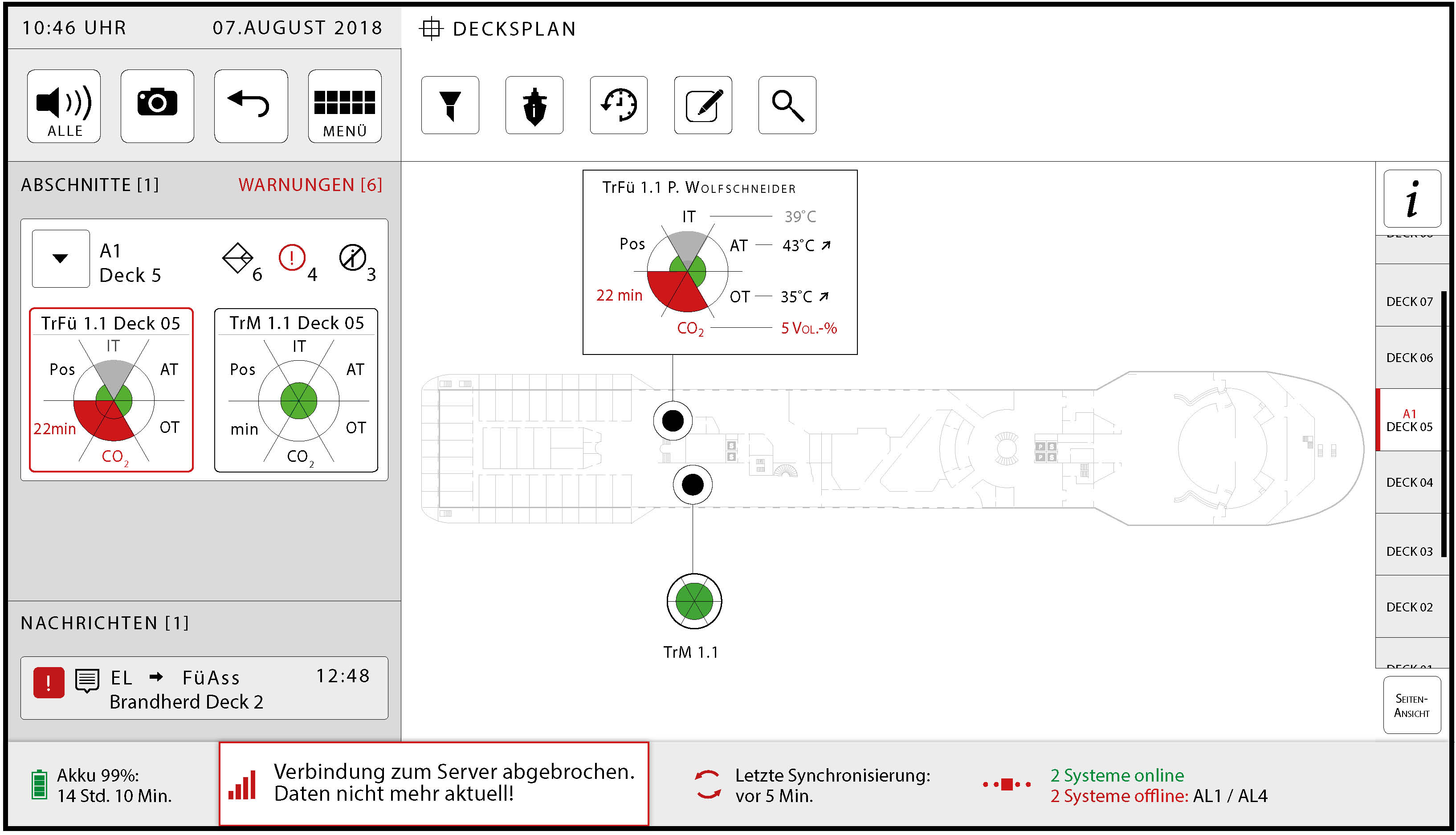
The research project has produced demonstrators that show future support options for fire brigades to combat hazards. Dr. Feiser: »The aim is to apply EFAS with its various system components not only to ships in port, but also to vessels on the high seas, for instance, for firefighting in stadiums, and also in industrial plants and public buildings.« The demonstrators were tested as a complete system in the context of a large-scale final evaluation in a real-world deployment scenario.
Project partners

The project »Mission Support System for Fire Brigades to Combat Hazards on Board Seagoing Vessels« (EFAS) was funded by the Federal Ministry of Education and Research within the Federal Government's »Research for Civil Security 2012-2017« Programme (Research area: Innovative Rescue and Security Systems).
| Project Monitoring | VDI Technology Centre |
|---|---|
| Project Coordination | Fraunhofer FKIE |
| Project Partners | ATS Elektronik GmbH Institute for Safety Technology/Ship Safety German Institutes of Textile and Fiber Research (DITF) MARSIG mbH S-GARD Protective Clothing |
| Associated Partners | E.R. Schiffahrt Wilhelmshaven Fire Department Hamburg Police Hanseatic City of Rostock German Shipowners' Association |
Mission Support System for Fire Brigades to Combat Hazards on Board Seagoing Vessels (EFAS), Project film

Privacy warning
With the click on the play button an external video from www.youtube.com is loaded and started. Your data is possible transferred and stored to third party. Do not start the video if you disagree. Find more about the youtube privacy statement under the following link: https://policies.google.com/privacy© 2019 S-GARD Schutzkleidung, Fraunhofer FKIE
